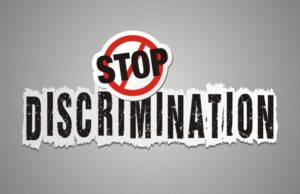Coalition for TJ v. School Board — Further Analysis

The two-judge majority in Coalition for TJ v. Fairfax County School Board concluded that the School Board’s revised admissions policy did not have a disparate, adverse impact on Asian American applicants to the high school; indeed, according to the court, this group was helped, not hurt, by the new admissions criteria.
Having parsed through the court’s language, I now understand the reasoning, but it’s hard to see how it would be sustained by the Supreme Court.
The Court’s Rationale
The new policy was designed to decrease the percentage of Asian Americans in the student body, and indeed it did. The percentage plummeted from 73% of the 2020 entering class to 54% of the 2021 class. But the majority decided that this before-after comparison is irrelevant. The proper approach, according to the court, is to examine the new policy on a stand-alone basis, without regard to the prior policy. And, under this approach, the proper test is to compare each racial/ethnic group’s admission-to-application ratio.
Using this test, the majority determined that the School Board’s new admissions policy advantaged Asian American applicants to TJ. Why? Because Asian Americans garnered 54% of the admissions to join the entering class when their share of applications was 49%. The court noted that the admission-to-application ratios of other racial/ethnic groups were lower: For White and Hispanic applicants, the admissions almost exactly matched their share of the applicant pool, whereas for African American students the ratio was unfavorable (10% of applications but only 8% of the offers).
Does the Court’s Test Withstand Analysis?
The test utilized by the two-judge majority essentially compares actual outcomes to what would occur in a purely random selection process. In random selection, any given group’s success in getting admitted to TJ should more-or-less match its share of the applicant pool. If Asian American students account for 48 % of the TJ applications, random selection would lead to about 48% of the admissions going to that group. Similarly, if green-eyed students comprise 16% of the applicants, about 16% of the acceptances should go to that group in a random process.
The obvious flaw with this test is that it totally ignores academic merit. It’s not rational to use a randomized procedure to admit students to an elite, academically-demanding school. This would result in a student body of average ability, not one that consists of the brightest and most hard-working students. If randomized admissions don’t make sense — and this is indisputable — how can it be proper to judge the fairness of an admissions policy to an academically rigorous school by comparing its results to what would occur under a randomized procedure?
Stated differently, the majority judges implicitly assume that each racial/ethnic pool of applicants to TJ are equal to one another in terms of their readiness for, and ability to handle, the rigorous curriculum of the school. If this were a valid assumption, then it might be rational to expect the rate of admissions for each group to correspond to its share of the applicant pool. But the assumption isn’t supported by reality. Asian American students, as a group, have performed well in Fairfax County schools, and elsewhere, because their families tend to stress the importance of education, discipline, hard work and a desire to achieve. Thus, it makes no sense to assume that a fair admissions policy will result in equal outcomes for every group.
How would the courts handle this hypothetical situation: Suppose the owners of the NFL football teams, being the woke citizens that they are, decided that the professional game should have more diversity. To achieve their goal, they devise a procedure whereby, in order to get into the draft lottery pool, prospects must meet certain criteria, which, in addition to the prior merit-based ones (speed, agility, strength, performance at the college level, etc.), include factors such as whether they have attended a college that’s traditionally been underrepresented in the NFL, whether they had a GPA in college of over 3.0, etc. Suppose further that because of the new criteria, African Americans constitute only 48% of the new lottery pool, significantly less than in the past. And assume that this group only gets 54% of the team offers under the new system, dramatically less than their 73% share in the past. Finally, assume that a class action is filed on behalf of the African Americans, claiming that the new policy violates their right to equal protection of the laws.
Under the majority’s analysis in Coaltion for TJ, the fact that the percentage of offers going to African American athletes dropped from 73% to 54% would be irrelevant. The court would only look at the fact that this group constituted 48% of the new draft pool and yet got 54% of the offers.
Would the courts analyze the NFL case as described, and rule in favor of “diversity”? If not, why should this be the correct way of deciding a case involving the minority group that was adversely affected by the changed policy in Coalition for TJ?


Thank you for summarizing this for us!
Strange reasoning indeed from the court.